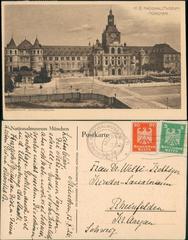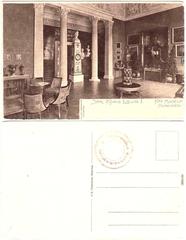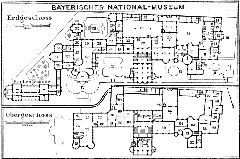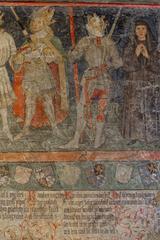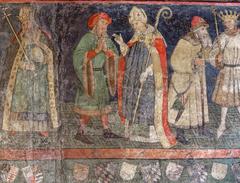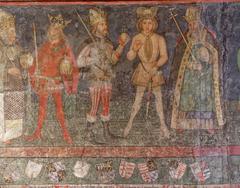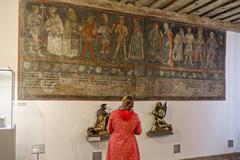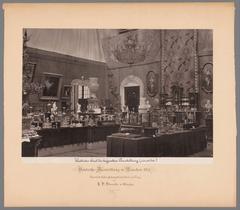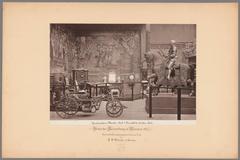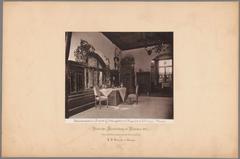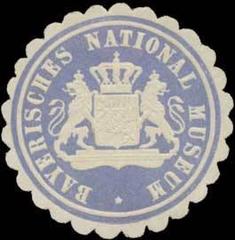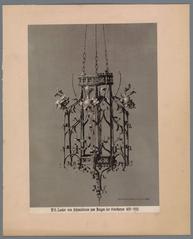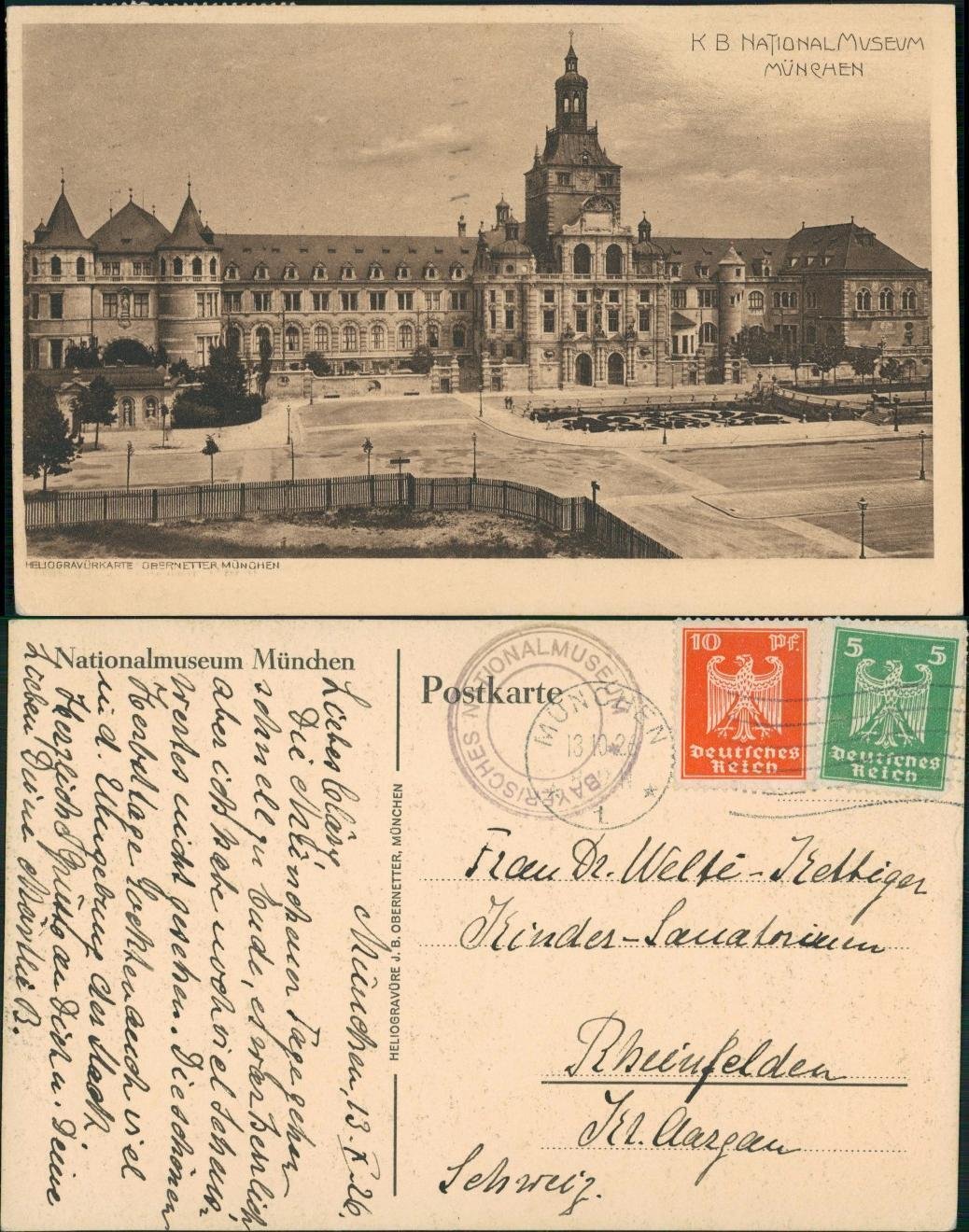
Bavarian National Museum Munich: Visiting Hours, Tickets, and Travel Guide
Date: 14/06/2025
Introduction
The Bavarian National Museum (Bayerisches Nationalmuseum) is one of Munich’s most significant cultural institutions, offering a rich and immersive exploration of Bavarian and European history, art, and tradition. Founded in 1855 by King Maximilian II of Bavaria, the museum stands today as a monument to the Wittelsbach dynasty and a guardian of cultural treasures spanning over two millennia. Housed in an architecturally stunning building blending Romantic, Gothic, Baroque, and Renaissance styles, the museum invites visitors to experience its diverse and extensive collections across 13,000 square meters of exhibition space (Bayerisches Nationalmuseum – History, Muenchen.de).
This detailed guide covers everything you need to plan your visit—from collection highlights and visitor amenities to practical travel tips and nearby attractions.
Table of Contents
- History and Significance
- Museum Collections & Highlights
- Visitor Information: Hours, Tickets, and Accessibility
- Amenities and Family-Friendly Features
- Travel Tips and Nearby Attractions
- FAQs
- Conclusion and Travel Recommendations
- References
History and Significance
Established by King Maximilian II in 1855, the Bavarian National Museum was conceived as a tribute to the House of Wittelsbach, Bavaria’s ruling dynasty for over 700 years. The museum’s initial collection centered on royal art holdings, with exhibits transferred from the Munich Residenz and other palaces. Over time, the collection expanded to include artifacts from late antiquity through the early 20th century, reflecting Bavaria’s evolving cultural identity (Bayerisches Nationalmuseum – History, History Curator).
The current building, designed by Gabriel von Seidl and completed in 1900, is a masterpiece of historicist architecture, blending several styles to create a “Gesamtkunstwerk”—a total work of art. Each hall is thoughtfully designed to complement the exhibits within, enhancing the museum’s immersive atmosphere (Muenchen.de).
The museum not only preserves Bavarian heritage but also serves as an important repository for European art and culture, engaging in ongoing research, conservation, and ethical stewardship—including provenance research and restitution efforts (Wikipedia).
Museum Collections & Highlights
With more than 40,000 objects, the museum’s collections span from the early Middle Ages to the early 20th century, focusing on Bavaria and southern Germany but also featuring significant European works (Museen in Bayern, Guide to Europe).
Key Collection Areas
- Medieval and Renaissance Art: Religious sculptures, altarpieces, goldsmith works, and illuminated manuscripts. Highlights include works by Hans Multscher and Tilman Riemenschneider (WhichMuseum).
- Baroque and Rococo Masterpieces: Ornate furniture, porcelain, paintings, and sculptures reflecting the courtly tastes of Bavaria.
- Art Nouveau and 19th-Century Decorative Arts: Jugendstil furniture, glassware, ceramics, costumes, and musical instruments.
- Folk Art and Everyday Culture: Traditional costumes, tools, toys, and household objects depicting both rural and urban life.
- World-Famous Nativity Scene Collection: The world’s largest and most important Krippen collection, with ensembles from the 17th to 20th century, displayed seasonally (Bayerisches Nationalmuseum).
- Arms and Armor, Musical Instruments, Scientific Instruments: Comprehensive displays including rare clocks and astronomical devices.
Temporary Exhibitions and Branch Museums
The museum regularly hosts special exhibitions on topics ranging from European decorative arts to contemporary crafts. It also manages branch museums across Bavaria, such as the Meissen porcelain collection at Schloss Lustheim (life-globe.com).
Visitor Information: Hours, Tickets, and Accessibility
Location
- Address: Prinzregentenstraße 3, 80538 Munich, Germany
- Transport: Tram line 18 or bus line 100 to Nationalmuseum/Haus der Kunst; U4/U5 Lehel subway stop (5-minute walk) (reverberations.net). Limited parking available nearby.
Opening Hours
- Tuesday–Sunday: 10:00 AM – 5:00 PM
- Thursday: Extended hours until 8:00 PM
- Closed: Mondays and select public holidays
- Check for updates: Official website
Ticket Prices
- Standard Adult: €7
- Reduced: €5 (students, seniors)
- Children under 18: Free
- Family and group rates: Available
- Special exhibitions: May incur additional fees
- Purchase: On-site or online (Official Site)
Accessibility
- Wheelchair accessible; elevators, ramps, and accessible restrooms available.
- Wheelchairs can be borrowed at the entrance.
- Assistance available for visitors with disabilities.
- Service dogs are permitted.
Amenities and Family-Friendly Features
- Cloakroom and Lockers: Available for coats and bags.
- Restrooms: On every floor; accessible facilities included.
- Café: Offers refreshments—a great spot for a break.
- Museum Shop: Sells books, postcards, and souvenirs.
- Multimedia Guides: Available in German and English; specialized children’s tours (Drachenpfad) in German (inside-munich.com).
- Interactive Exhibits: Family-friendly features and educational programs are available, especially during the Christmas season with the nativity scenes (life-globe.com).
Travel Tips and Nearby Attractions
- Photography: Non-flash photography is generally permitted for personal use; restrictions may apply in special exhibitions.
- Duration: 2–3 hours is sufficient for most visitors; enthusiasts may wish to split the visit across two days.
- Language: Most exhibit labels are in German; English summaries and multimedia guides are available.
- Nearby Sites: Englischer Garten, Haus der Kunst, Munich Residenz, National Theatre, and Marienplatz are all within walking distance or a short transit ride (reverberations.net).
FAQs
Q: What are the Bavarian National Museum visiting hours?
A: Tuesday to Sunday from 10:00 AM to 5:00 PM, with extended hours until 8:00 PM on Thursdays. Closed Mondays and select holidays.
Q: How can I purchase tickets?
A: Tickets are available on-site or online via the official website.
Q: Is the museum accessible for people with disabilities?
A: Yes, with elevators, ramps, accessible restrooms, and wheelchair rentals.
Q: Are guided tours available?
A: Yes, in German and English. Specialized tours for children are also offered (currently only in German).
Q: Can I take photos inside the museum?
A: Non-flash photography is generally allowed, but restrictions may apply in certain areas.
Q: When is the nativity scene collection displayed?
A: Seasonally from November to January.
Conclusion and Travel Recommendations
The Bavarian National Museum is more than a repository of art and artifacts—it is a vibrant center of Bavarian identity and European cultural history. With its impressive architecture, diverse collections, and commitment to accessibility and ethical stewardship, the museum offers a profound and engaging experience for visitors of all ages and interests. Its central location makes it easy to combine your museum trip with other iconic Munich attractions.
To get the most from your visit:
- Check the latest hours and ticket options on the official website.
- Consider using the multimedia guide for in-depth exploration.
- Visit during the winter holidays to see the world-famous nativity scenes.
- Download the Audiala app for guided tours, museum updates, and further travel tips.
Start your journey into Bavaria’s rich cultural heritage and discover why the Bavarian National Museum is a must-see landmark on any Munich itinerary.
References
- Bayerisches Nationalmuseum – History
- Muenchen.de: Bavarian National Museum
- History Curator: Munich Historic Sites Visitors Guide
- Museen in Bayern: Bayerisches Nationalmuseum
- Guide to Europe: Bavarian National Museum
- Official Site: Bayerisches Nationalmuseum
- WhichMuseum: Bavarian National Museum
- life-globe.com: Bavarian National Museum
- reverberations.net: Visit Bayerisches Nationalmuseum
- inside-munich.com: National Museum
- misstourist.com: Things to Do in Munich
- Wikipedia: Bavarian National Museum
